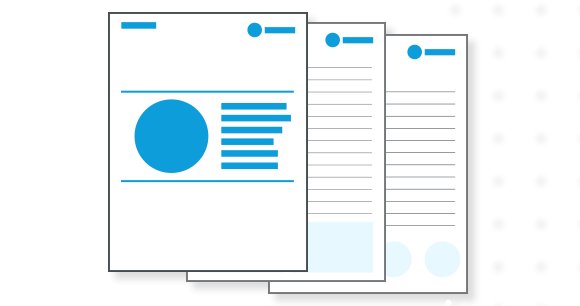A Powerful iPaaS
New Enterprise Integration
As enterprise cloud adoption increases and companies transition mission-critical systems to the cloud, there is a growing emphasis on integration. The shift of core applications forces organizations to take a hard look at their adoption approach and re-evaluate their strategic needs. As a result, many companies will decide they can no longer afford ‘cloud silos’ that have been tolerated in the past, and will require a new approach to managing application integration.
While custom point-to-point integration code has worked in the past to stitch applications together, companies quickly realized the need for a more flexible approach. Today’s enterprise has on-premises applications, cloud services, and a host of social platforms – all which need to connect seamlessly. Looking to the future, the integration solution will need to easily scale and adapt to a continually evolving technical landscape.
Arrival of the iPaaS
In 2011, enterprises were introduced to the iPaaS (integration platform as a service) by the Gartner Group, who coined the term and quickly released several research publications that touted its arrival. An iPaaS is denoted as a platform for building and deploying integrations within the cloud and between the cloud and the enterprise. An iPaaS is designed to allow users to connect applications that reside in the cloud or on-premises and deploy them without installing or managing any hardware or middleware.
For many enterprises, an iPaaS provides the last essential component to realize the benefits of cloud architecture. However, due to its appeal, many vendors were quick to offer an “iPaaS solution” that was merely a re-packaged adaptation of a dated product (often referred to as ‘cloud washing’). This made it difficult for organizations to determine the validity of many iPaaS offerings.
Characteristics of a Strong iPaaS
To overcome this facade, strategic IT departments need to carefully evaluate iPaaS offerings. A strong iPaaS solution has distinct characteristics that are essential to the success of the platform.
Integrated Development Environment (IDE)
A strong iPaaS integration platform offering is easy to use and navigate. This is commonly accomplished by an integrated development environment that provides programmers a visual interface for creating and managing integration flows. Particularly well-suited IDEs provide drag-and-drop features that empower non-technical resources to complete standard integration tasks.
Pre-built Connectivity
Pre-built connectivity is required for today’s enterprise – by leveraging existing code, companies can create integrations quickly and save hours of valuable developer time. Organizations that use proprietary systems, such as SAP, TIBCO, or Oracle, will also want to ensure the iPaaS provider has experience connecting these enterprise systems. An advanced iPaaS integration platform will not only provide pre-built connectors but will also offer packaged, end-to-end integrations for common integration challenges (e.g., hire-to-payroll process, order-to-invoice process).
Secure Data Gateway
A primary concern for cloud-based integration is enterprise security between on-premises and cloud apps. An iPaaS offering must be able to transfer data in a secure fashion without custom coding. An iPaaS with a secure gateway enables behind-the-firewall access to secure data without exposing the on-site infrastructure to unnecessary risks.
A True Platform
An iPaaS needs to be a true platform, and cannot simply be a collection of hosted integration tools. A strong iPaaS offering requires no maintenance, provides a SaaS-aligned delivery model, and takes advantage of the elasticity of the cloud. A tool-based approach will always be confined by the limitations of its tools and is unable to offer the scale and flexibility of a platform-based iPaaS.
Open Source
By design, an iPaaS is intended to reside in the middle of an application architecture. As a central component, it is necessary that the iPaaS is an open source solution that abides by global standards and has easily available source code. Proprietary solutions can force companies into vendor lock-in that can make it difficult to unlink in the future. Open source solutions also tend to have larger development communities that provide additional documentation and tutorials.
A robust iPaaS meets these requirements, and is a valuable component within the application architecture. Equally vital to the characteristics of the iPaaS is the integration provider; integration providers should work with an organization as a strategic partner to strengthen the overall enterprise architecture.
Anypoint Platform: iPaaS from MuleSoft
MuleSoft's Anypoint Platform is the leading iPaaS integration platform solution. Designed specifically with the enterprise in mind, this fully cloud-based solution takes advantage of the elasticity of the cloud while providing a secure connection to on-premises systems. Anypoint Platform also has the ability to be deployed in hours – ensuring a quick time to market with pre-built connectors and integration apps.
For organizations that are not ready to transition to the cloud yet, but have it on their roadmap – they can start with MuleSoft’s on-premises solution, Mule as an ESB.
Anypoint Platform also comes with MuleSoft’s award-winning professional services and support teams. These professional groups can evaluate your business needs and develop an integrated architecture to meet your strategic objectives.




